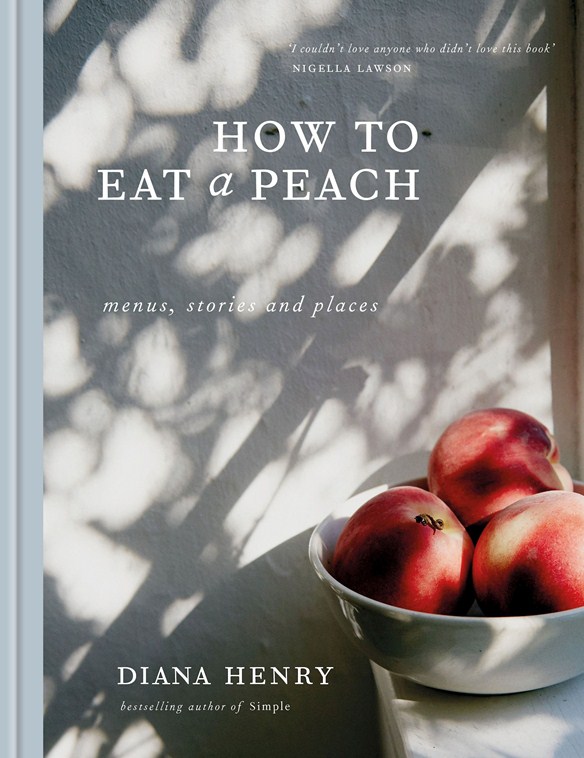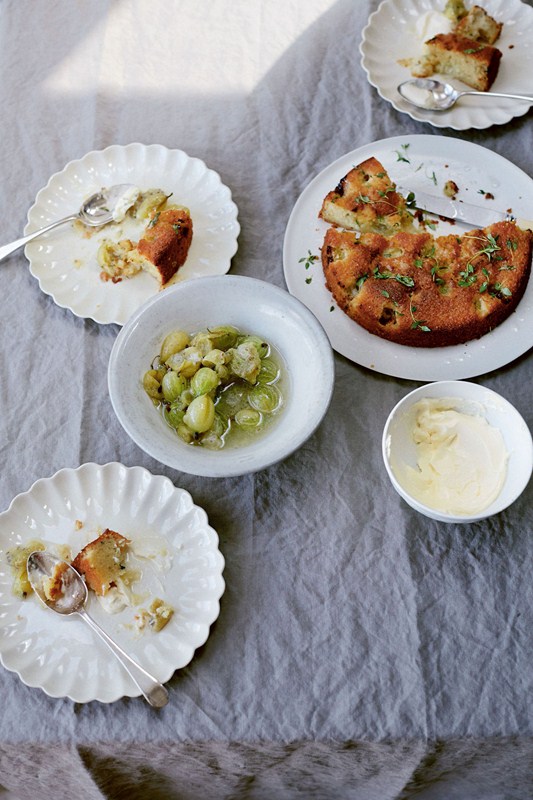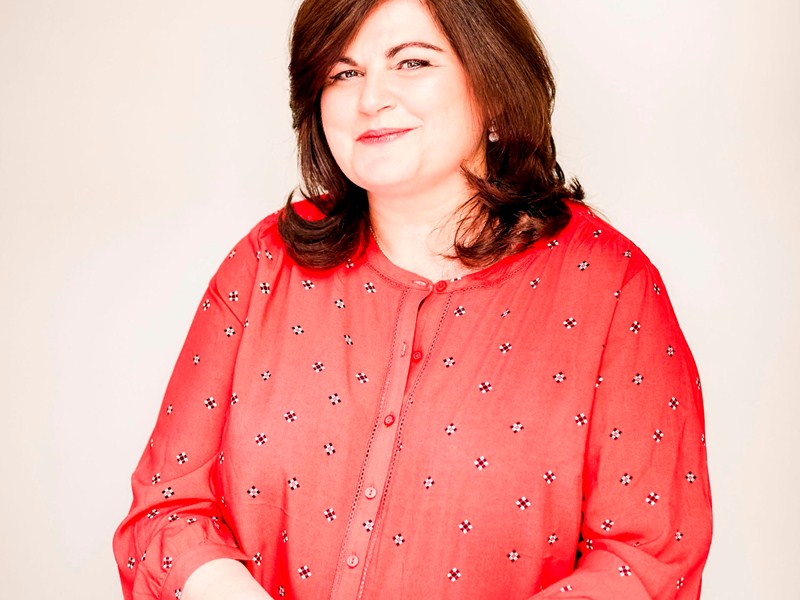Back with a new cookbook, the food writer talks Ella Walker through How to Eat a Peach
Menus are usually things you quickly scan before discarding, that you spill red wine on, or fold up to stabilise a wobbly table leg. For food writer Diana Henry though, menus are so much more than that, and not purely the domain of restaurants either.
“At the weekend, I’ve always got friends calling me asking, ‘Di, what can I do for a starter that’s really quick?’, or they’ll have decided on the main course but will say, ‘What can I do for a pudding?’
“I’m always telling people what goes with what,” she explains. “I love the challenge of standing in the greengrocer’s and putting things together.”
A resource not just to her friends, the Sunday Telegraph and Waitrose Weekend writer’s new cookbook, How To Eat A Peach, combines her love of matching ingredients with planning meals. “I love putting menus together for no reason whatsoever,” she says, remembering how she’d jot down food plans as a teenager, filling a ‘fantasy’ notebook with meals she’d cook in an ideal world.
She began having people round for supper when she was about 16 (her parents had parties, not dinner parties), and the menu planning never ceased: “I do it now still – I think of a menu, and then I think about who would like to eat it.”

Cooking is about knowing when to stop
How To Eat A Peach was inspired, both in title and content, by an evening Henry spent in Italy, watching a group of Italians slicing white fleshed peaches and dropping them into glasses of ice cold Moscato, only to drink the liquid and then pick out and eat the soft fruit, sticky and plump with the booze.
“It’s such a lovely way to end a meal, but is also a really good approach to cooking,” says Henry. “It’s about knowing when not to do anything, and when something is just elegant and lovely in itself.”
The book, as a result (with a peachy, softly furred jacket), helps you tread the line between “when to not do very much, and when to do very much”. Just don’t expect it to be about ‘entertaining’…
“I hate that word,” says Henry with a grimace. The word “hosting” gets similarly short shrift: “I just have people in!”
Food can help you travel and explore – even if you’re stuck in one place
The collection is woven through with a sense of place, with each chapter grounded by a moment in time, a memory of a place, a season, as well as a single, or set of, ingredients. “Each menu is its own little world,” says Henry, flipping through evocatively titled examples like, ‘Drunk on olive oil’, ‘Take me back to Istanbul’, and ‘Monsieur Matuchet plays the piano’.
“One of the main reasons I cook is to go back to places; or go to places,” she explains. Henry, now London-based with two sons of her own, travels a lot (Russia is a current focus), but didn’t as one of four children growing up in Northern Ireland (“The way I travelled was by reading, and by cooking – I so wanted to go elsewhere, desperately”).
“It seems crazy, but in the mid-Seventies, you couldn’t get peppers and aubergines in Northern Ireland – those were exotic” she says, recalling how she wrangled her greengrocer into ordering them especially so she could make ratatouille. “If you’ve never cooked aubergine before, that melting texture and that taste which is hard to say what it is at all – that was the way I went places.”
Aged 15, she finally went abroad for the first time – to France on an exchange trip, where a boy taught her to make perfectly lacy crepes (she still has the recipe written on blue airmail paper and it’s recreated in the book, with added sauteed apple and caramel), before years of Easters spent in Normandy and Brittany followed. The memories are stirred intrinsically into chapter one, ‘Cider and gitanes’, while the time she went to meet a man about a horse in a bar with her father in Spain (“It had these great leather chairs and smoke in the air”) defines ‘Darkness and light’, where squid ink and rice are paired with romesco sauce.

Food doesn’t have to be complicated, but it should involve care
Henry did train at Leiths Cookery School, and formerly worked in TV, but considers herself a home cook (“I don’t especially like complicated stuff”), and says she couldn’t be a professional chef because she’d grow too bored making the same dishes on repeat. “And I’m slow, and I’m really messy.”
Instead, she spends her time constantly thinking about combinations, asking herself: “What is good with that? You think about flavour and texture; you think about what you want in your mouth – lots of cooking is about contrast.”
Her recipes often develop as ways to solve problems – for instance, what to eat when it’s too hot to cook, or, when you’re having people over and one of your dishes requires a lot of effort (like Henry’s apricot tart: “It’s one of my favourite things”), how to surround it with plates that are simple (like her courgette fritters hot out of the pan, and roast chicken with lemon).
“It’s about having a little bit of thought.” And no one’s food is more thoughtful than Diana Henry’s.
How To Eat A Peach by Diana Henry, photography by Laura Edwards, is published in hardback by Mitchell Beazley, priced £25 (octopusbooks.co.uk)
You can see Diana Henry at the Wealden Literary Festival this summer








